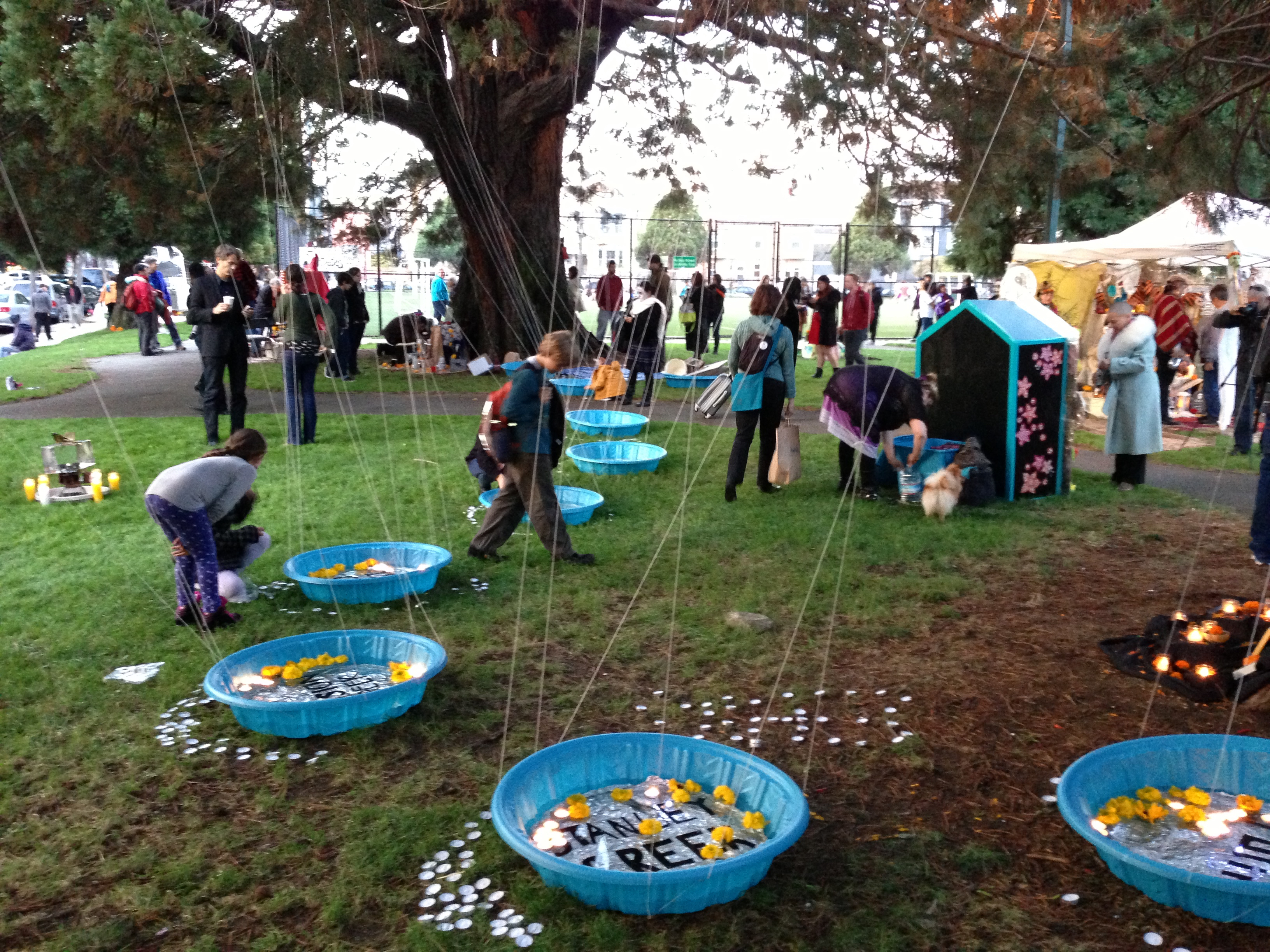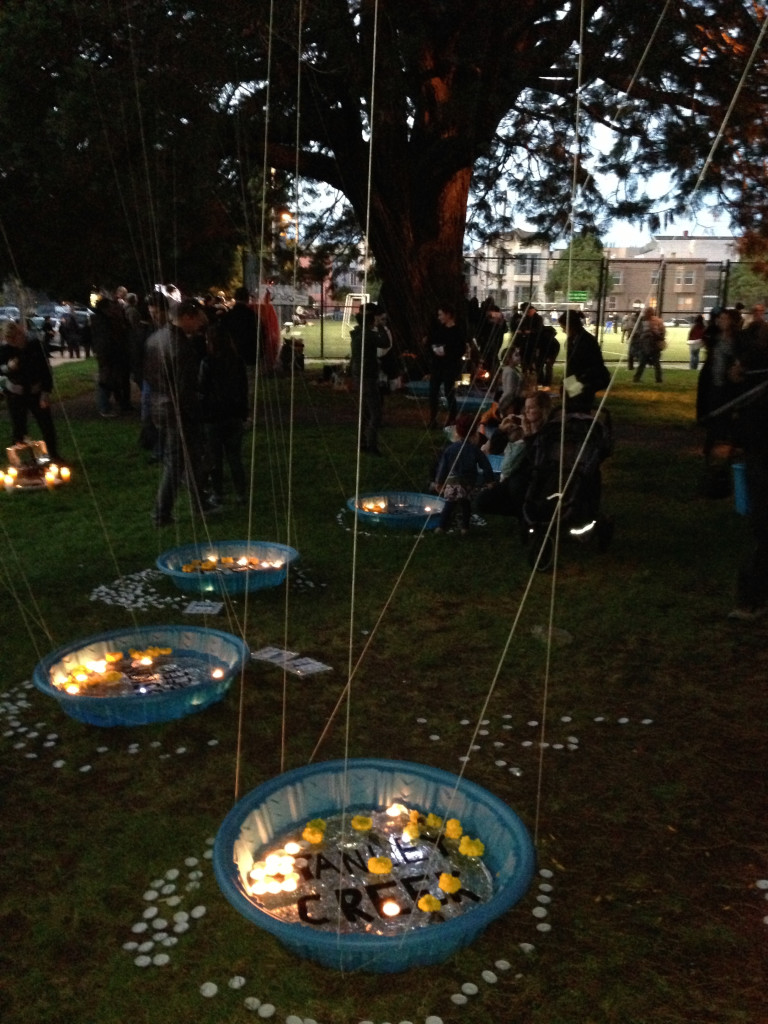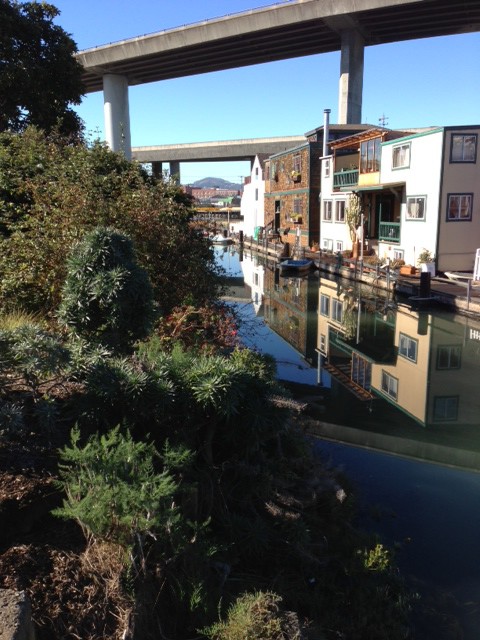Intimate Strangers: A Ritual for the Buried Creeks of San Francisco (2012)
Initial Proposal for the Grant:
Funded by the Zellerbach Foundation
Day of the Dead 2012
Alter Proposal: Finding the buried Creeks
An Ecological Alter for our Buried Living Ancestors
I question how we can observe and honour not only our dead ancestors but also the buried creek beds that run below the Mission district of San Francisco. In honoring these creek beds I am acknowledging the entanglement of human (culture) and nature and trying to feel beyond the divide that separates humans and “nature.” Nonhumans have had a big impact on humans and yet we as humans have been negligent in our treatment of them.
We often forget when standing on impermeable pavement or in our city parks that water still exists beneath these streets, developments, and sandy lots. What once flowed in surface channels, though now buried in the ground or steered into sewer pipes, is still there somewhere. Tens of millions of gallons of fresh water each day (probably over three million just in the North Mission area) flow right below our feet from artesian springs of potable water. ‘Artesian’ is the term for sources that rise above the water table to the surface due to their own hydrologic pressure, needing no pumping.
Adding yet another layer to the mystery, massive surges of groundwater, much of it potable, travel continuously just beneath us from related “subartesian” sources that even historically never came fully to the surface. We easily overlook these “creeks” since they have never come into view to receive formal names.
My proposal is to place 10 blues pools in a line along the creek bed that runs through Garfield Square. Each pool will be filled with water that I have collected from the buried creeks of San Francisco. The backyard wading pools remind us that there are buried creeks that hold water in many backyard homes in the Mission area. Surrounding the pools will be strings strung vertically from the ground to the branches of trees growing over the pools. Surrounding the pools will be candles. The people attending the Day of the Dead celebration are invited to light the candles and place them in the pools. To get to the water they will have to negotiate the strings, changing their bodying in the process.
This alter will honor the non-human entities that we do not see or have been lost. In honoring the non human we decentralize the human and acknowledge the entanglment of the human with the other than human. The Day of the Dead is a remembrance of the human and sometimes animal dead and the celebration of the continuity of life and the community. Perhaps in honouring the fresh water creeks that have been buried in the Mission district we also can begin to sense that the acknowledgement of these non human entities might be the key to the continuity of our human communities.


